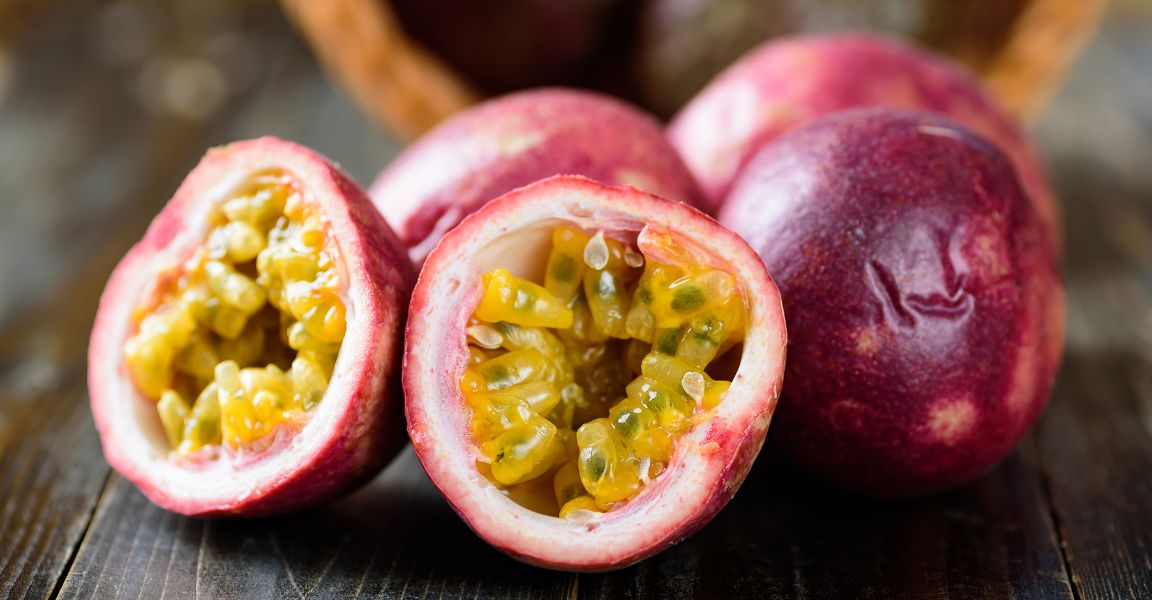[su_note note_color=”#ffe3e6″]This post contains affiliate links. Affiliate disclosure: As an Amazon Associate, we may earn commissions from qualifying purchases from Amazon.com and other Amazon websites.[/su_note]
While not among the most popular fruits eaten in the United States, passion fruit has ardent fans worldwide. The sweet and sour fruit is truly one-of-a-kind. Explore these four facts you probably don’t know about passion fruit.
Ladle of Contents
1. The Name Isn’t About Passionate Emotions
Early Portuguese Christian missionaries in Brazil used the passionflower to symbolically illustrate the story of Jesus’s death and resurrection to indigenous people. For the missionaries, the flower’s five anthers represented Jesus’s Five Sacred Wounds.
The missionaries called the flower “flor das cinco chagas,” which in English means “flower of the five wounds.” Since many other parts of the flower also symbolized elements of the crucifixion, the fruit and flower eventually earned the name passion fruit in English after the Passion, the final period of Jesus’s life.
2. Its Juice Is Great for Desserts
Passion fruit juice is an ingredient in various desserts around the world. You can flavor desserts such as mousse, ice cream, yogurts, and cheesecake with the sweet and tart fruit.
While you can use the fruit to make satisfying desserts, passion fruit juice also has many health benefits. For example, passion fruit has a high potassium content, and potassium helps to regulate blood pressure levels.
3. Brazil Grows and Consumes the Most Passion Fruit
Another fact you might not know is that Brazil grows about 50 to 60 percent of the world’s passion fruit. They also consume more passion fruit than any other country.
Aside from eating fresh passion fruit or drinking fresh juice, Brazilians use passion fruit to prepare jams, baked foods, and liqueurs. Consider adding passion fruit to caipirinha, Brazil’s national cocktail.
4. It Comes in Many Colors
Passion fruit comes in an array of beautiful colors. It can be purple, yellow, red, or green. The purple and yellow varieties are the most popular.
You’re more likely to encounter purple passion fruit in the US. Purple fruit is smaller and sweeter than the yellow type. Yellow passion fruit is larger and more sour—and it’s the more popular variety in Brazil.



